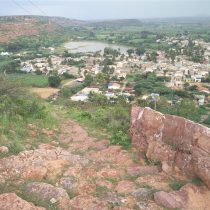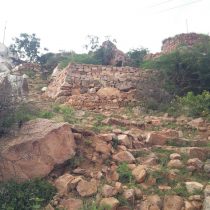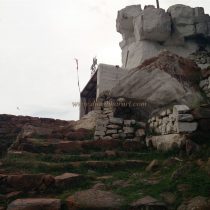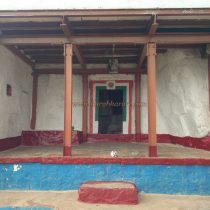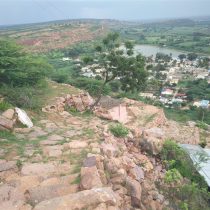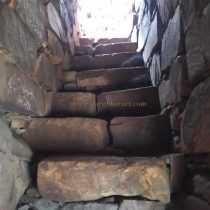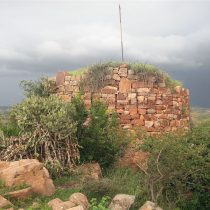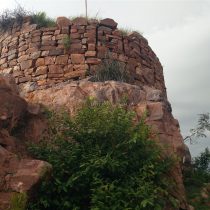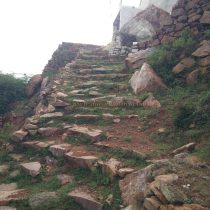HOOLI
TYPE : HILL FORT
DISTRICT : BELGAON
HEIGHT : 2430 FEET
GRADE : EASY
Huli village is mentioned as the oldest town in Belgaum district. The locals say that the ancient Mahispatinagar is today's Huli. This village is known as the village of 101 temples and near the lake outside the village, you can still see 11 ancient temples such as Panchalingeshwar, Trikuteshwar, Andhkeshwar, Bhavani Shankar, Kalmeshwar, Kashi Vishwanath, Madneshwar, Suryanarayana, Tarkeshwar, and Sangameshwar. This village is situated between two hills and the water requirement of this ancient city has been met by constructing a dam, thus blocking the stream of water coming from the gorge. A fort was built on the hill behind the village to protect the village. Located in Saundatti taluka of Belgaum district, this fort is at a distance of 10 km from taluka place and a distance of 98 km from Belgaum city.
...
Huli village is at a distance of 47 km from Dharwad. Reading the descriptions of Huli village in a few places, it is read that there is a fort on the hill behind this village. But this information is incomplete and confusing. There are two hills behind Huli village and there are two different forts on these two hills. The fort on the hill on the right is mentioned everywhere but the fort on the hill on the left is not mentioned anywhere. Entering the village of Huli from Saundatti, on the top of the hill on the left, there is a large white-painted cliff. Thinking that this painted rock is the fort, we started climbing towards this mountain. This painted rock is the temple of Siddheshwar carved out of rock and the villagers have constructed an unpaved road from the settlement at the beginning of the village to this temple. Except in the rainy season, vehicles like jeeps can reach here. Apart from this, there is a visible footpath from Huli village to this temple. Half an hour is enough to walk from the foothills to this temple. The remains of the fort can be seen from where your vehicle stops. Stairs are built to reach the fort. On the way to the fort, there is an uneven cave carved in the rock on the left side and there is a Shivling inside it. After climbing a few steps from there, on the right side, there is a well-maintained bastion built out of stone. From this bastion, another ruined bastion of the fort and its interior can be seen. The fort is about 4 acres in size and is 2420 feet above sea level. The fort is heavily overgrown with thorny bushes, and there are no remnants of the fort, except for small cisterns carved into the rock, a well filled with bushes, and a dilapidated rampart. Half an hour is enough for the fort round. From the fort, one can see the village of Huli, the lake outside the village, and the temples on its banks as well as a distant region. The second fort in the village of Huli can be seen on the hill in front of here, but it is not easily noticeable as its ramparts have collapsed. Looking at the Chalukya temples in the village, it must have had an ancient history. After invading Rashtrakuta, Chalukya, Kadamba, and Adilshahi dynasties, Shivaji Maharaj annexed Dharwad to Swarajya in 1680 AD. The forts here must have been repaired at the time when Chhatrapati Shivaji Maharaj built the fort at Nargund, which is close to Huli. Later, the fort came under the control of the Mughals and later the Kolhapur province. Seeing that Fateh Singh Bhosale did not have much influence on this area, in 1747, Sadashivrao Bhau invaded this area with Sakharam Bapu and Mahadjipant Purandare. He conquered 35 parishes like Kittur, Gokak, Parasgad, Badami, Bagalkot, Torgal, Haliyal, Nargund, Yadwad, Basavapattan and defeated the Desai in these areas. During the reign of the great Madhavrao Peshwa, this region was under the control of Patwardhan. There are many houses with Marathi surnames in the village. After the end of the Maratha ruler, Desai started to work under the British establishment.
© Suresh Nimbalkar


